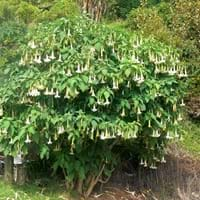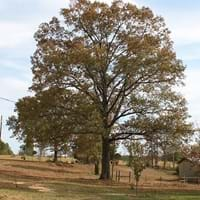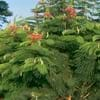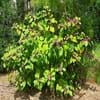Life Span
Perennial
Perennial
Origin
Hybrid origin
United States, Mid-Atlantic United States, Southeastern United States, Central United States, South-Central United States
Types
Not Available
Not Available
Habitat
Tropical regions
Sandhills
USDA Hardiness Zone
8-14
6-9
Sunset Zone
H1, H2, 12, 13, 16, 17, 18, 19, 20, 21, 22, 23, 24
Not Available
Habit
Upright/Erect
Oval or Rounded
Flower Color
White, Pink
Red, Light Green
Flower Color Modifier
Bicolor
Bicolor
Fruit Color
Light Yellow
Brown, Black
Leaf Color in Spring
Green
Green, Gray Green
Leaf Color in Summer
Green
Gray Green, Dark Green
Leaf Color in Fall
Green
Gray Green, Dark Green, Tan, Dark Red
Leaf Color in Winter
Green
Not Available
Plant Season
Spring, Summer, Fall, Winter
Spring, Summer, Fall
Sunlight
Full Sun, Partial Sun
Full Sun
Type of Soil
Loam, Sand
Clay, Loam, Sand
The pH of Soil
Acidic, Neutral
Acidic, Neutral
Soil Drainage
Well drained
Well drained
Bloom Time
Indeterminate
Spring
Tolerances
Not Available
Pollution
Where to Plant?
Ground, Pot
Ground
How to Plant?
Stem Cutting
Seedlings, Stem Planting, Transplanting
Plant Maintenance
Medium
Medium
Watering Requirements
Needs a lot of moisture in the growing season, Needs a lot of water initially, Needs good drainage
Average Water Needs, Do Not over Water, Keep ground moist, Never Over-water, Requires watering in the growing season, Water less during winter
In Summer
Lots of watering
Lots of watering
In Spring
Moderate
Moderate
In Winter
Average Water
Average Water
Soil pH
Acidic, Neutral
Acidic, Neutral
Soil Type
Loam, Sand
Clay, Loam, Sand
Soil Drainage Capacity
Well drained
Well drained
Sun Exposure
Full Sun, Partial Sun
Full Sun
Pruning
Remove damaged leaves, Remove dead branches, Remove dead leaves
A hard prune may be necessary if the plant becomes woody, Remove damaged leaves, Remove dead branches, Remove dead leaves
Fertilizers
All-Purpose Liquid Fertilizer
fertilize in growing season
Pests and Diseases
Red blotch
Leaf Blister, Spider mites
Plant Tolerance
Drought
Drought, Salt
Flowers
Showy
Insignificant
Flower Petal Number
Single
Not Available
Foliage Texture
Coarse
Coarse
Foliage Sheen
Matte
Glossy
Attracts
Butterflies, Hummingbirds, Moths
Birds
Allergy
Confusion, Headache
no allergic reactions
Aesthetic Uses
Beautification, Showy Purposes
Landscape Designing
Beauty Benefits
Not Available
Not Available
Environmental Uses
Air purification
Air purification
Medicinal Uses
Antiasthamatic, Antirheumatic, Arthritis, Dermatitis
Nutrients
Part of Plant Used
Leaves
Bark, Seeds, Stem, Tree trunks
Other Uses
Used as Ornamental plant, Used for its medicinal properties
Economic Purpose, Used in construction
Used As Indoor Plant
No
No
Used As Outdoor Plant
Yes
Yes
Garden Design
Container, Feature Plant, Foundation, Mixed Border, Tropical
Feature Plant, Shade Trees
Botanical Name
BRUGMANSIA 'Frosty Pink'
QUERCUS falcata
Common Name
Angel's Trumpet
Southern Red Oak
In Hindi
Brugmansia
दक्षिणी लाल ओक
In German
Brugmansia
Südliche Red Oak
In French
Brugmansia
Chêne rouge du Sud
In Spanish
Brugmansia
Roble Rojo meridional
In Greek
Brugmansia
Νότια Red Oak
In Portuguese
Brugmansia
Southern Red Oak
In Polish
Brugmansia
Southern Red Oak
In Latin
Brugmansia
Quercus falcata
Phylum
Magnoliophyta
Magnoliophyta
Class
Magnoliopsida
Magnoliopsida
Family
Solanaceae
Fagaceae
Clade
Angiosperms, Asterids, Eudicots
Angiosperms, Eudicots, Rosids
Tribe
Datureae
Not Available
Subfamily
Solanoideae
Not Available
Number of Species
Not Available
Not Available
Difference Between Brugmansia and Southern Red Oak
If you are confused whether Brugmansia or Southern Red Oak are same, here are some features about those plants to help you choose better. Many people think that these two plants have the same characteristics, but one can see Brugmansia and Southern Red Oak Information and learn more about it. Fertilizers required for proper growth of Brugmansia are All-Purpose Liquid Fertilizer, whereas for Southern Red Oak fertilizers required are fertilize in growing season. Hence, one should know the basic difference between Brugmansia and Southern Red Oak if you are planning to have them in your garden to enhance its beauty.
<
Flowering PlantsImportance of Brugmansia and Southern Red Oak
Want to have the most appropriate plant for your garden? You might want to know the importance of Brugmansia and Southern Red Oak. Basically, these two plants vary in many aspects. Compare Brugmansia and Southern Red Oak as they differ in many characteristics such as their life, care, benefits, facts, etc. Every gardener must at least have the slightest clue about the plants he wants to plant in his garden. Compare their benefits, which differ in many ways like facts and uses. The medicinal use of Brugmansia is Antiasthamatic, Antirheumatic, Arthritis and Dermatitis whereas of Southern Red Oak is Nutrients. Brugmansia has beauty benefits as follows: Not Available while Southern Red Oak has beauty benefits as follows: Not Available.
Compare Facts of Brugmansia vs Southern Red Oak
How to choose the best garden plant for your garden depending upon its facts? Here garden plant comparison will help you to solve this query. Compare the facts of Brugmansia vs Southern Red Oak and know which one to choose. As garden plants have benefits and other uses, allergy is also a major drawback of plants for some people. Allergic reactions of Brugmansia are Confusion and Headache whereas of Southern Red Oak have no allergic reactions respectively. Having a fruit bearing plant in your garden can be a plus point of your garden. Brugmansia has no showy fruits and Southern Red Oak has showy fruits. Also Brugmansia is not flowering and Southern Red Oak is not flowering . You can compare Brugmansia and Southern Red Oak facts and facts of other plants too.





